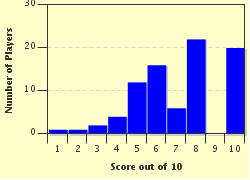
Where Is It Located? Part 6 Trivia Quiz
This quiz explores the world of ancient Rome. All of the areas became provinces during the Empire Period. You are to match them with the modern-day countries. Every effort has been made to be as accurate as possible with today's borders.
A matching quiz
by ponycargirl.
Estimated time: 4 mins.
